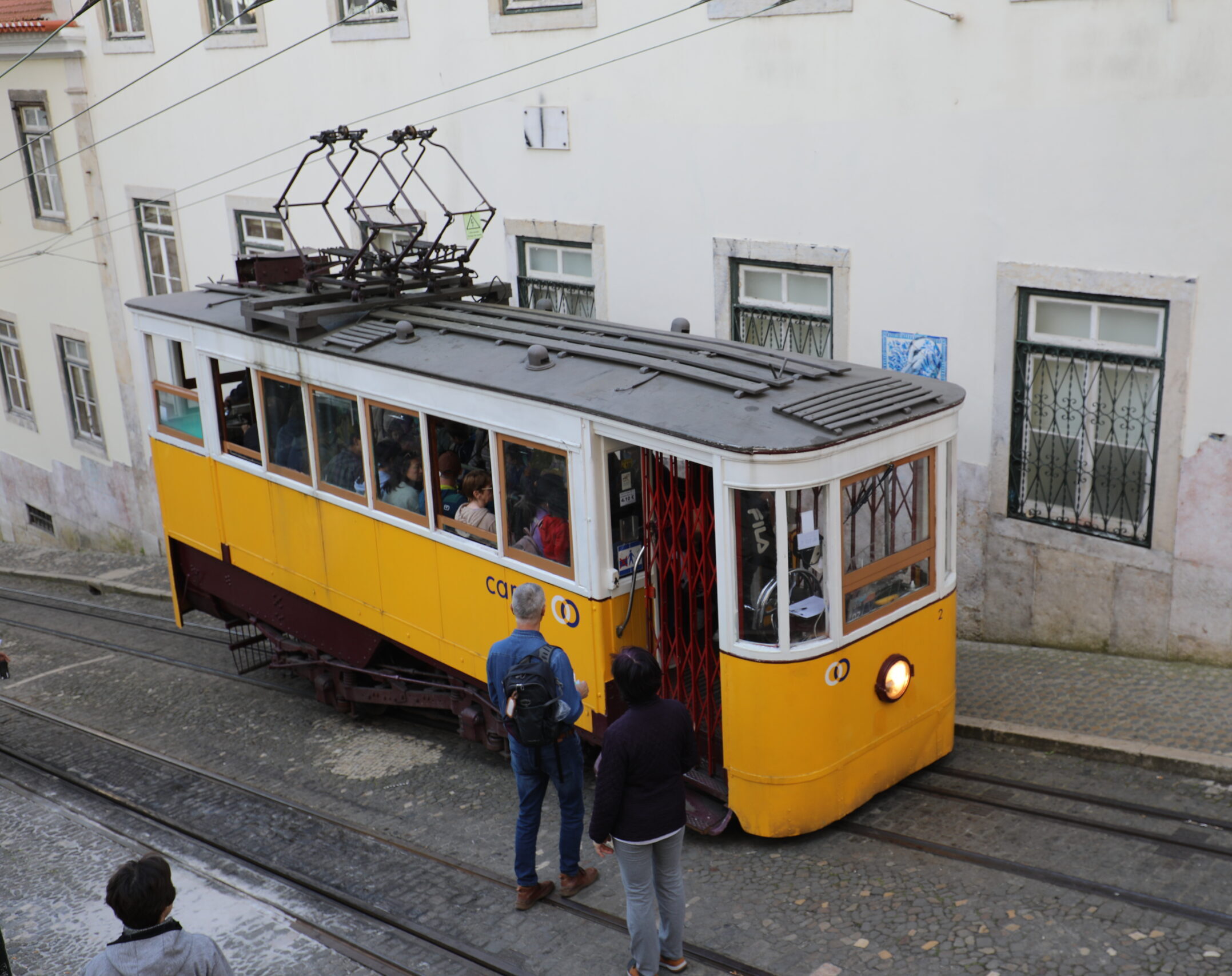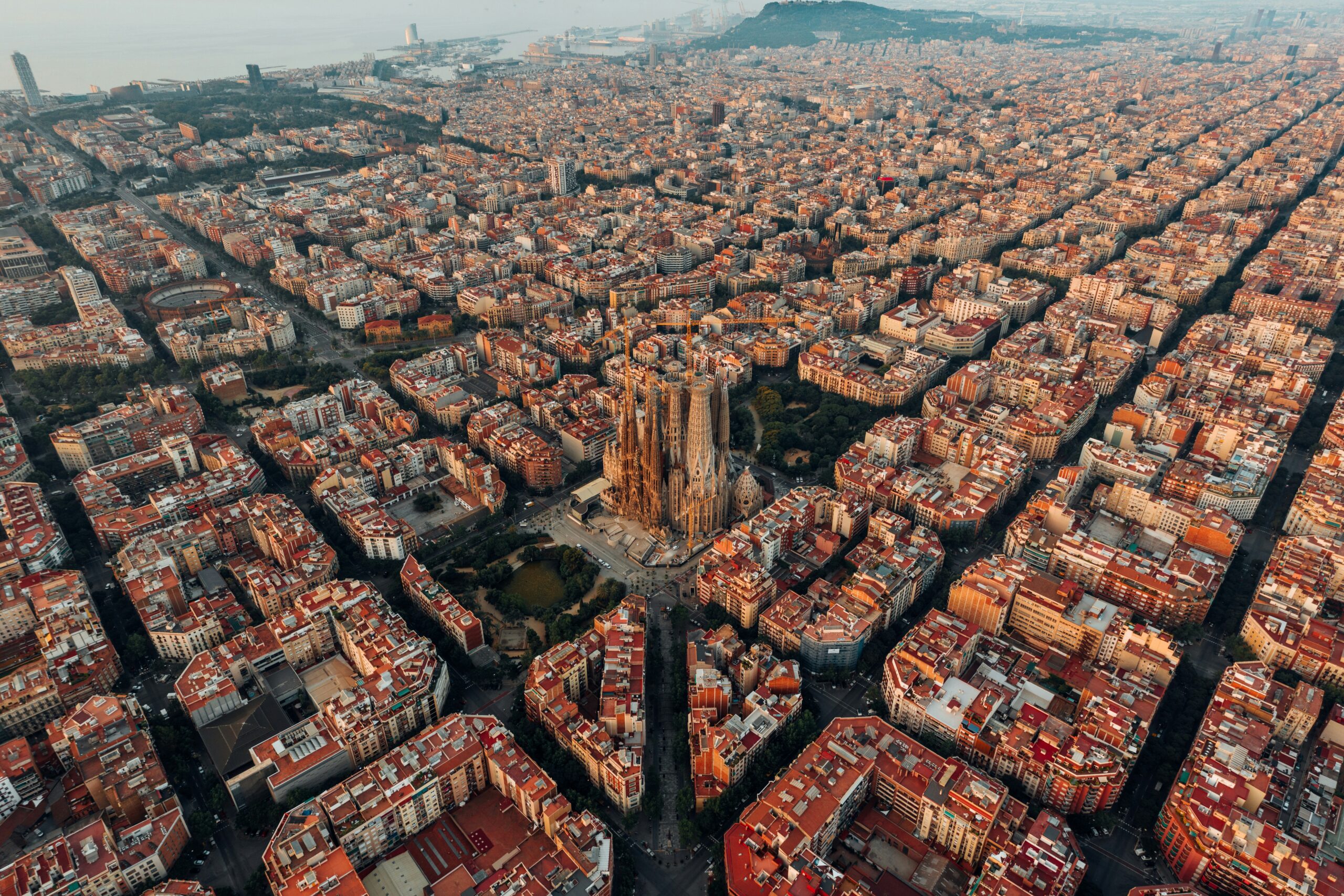Florence, the cradle of the Renaissance, is a dream destination for travellers seeking to experience breathtaking art, stunning architecture, and centuries-old history. However, for wheelchair users and accessible travellers, the city’s charm can pose unique challenges with its cobblestone streets, tight alleyways, and historical landmarks.
Here’s the good news: after spending time exploring this remarkable city, we found that Florence is far from inaccessible. With practical planning and a few helpful tips, navigating this breathtaking destination is not only possible but surprisingly manageable. If you’ve been wondering whether Florence is wheelchair-friendly, this guide will show you how to experience its beauty with comfort and confidence.
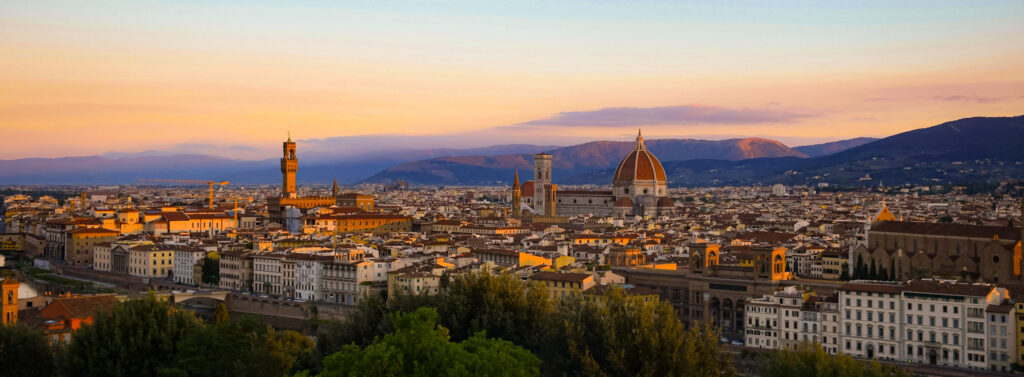
The Charming Challenges of Florence
Florence’s historic allure owes much to its cobblestone streets and sprawling hills. But for wheelchair users, these features can sometimes turn into obstacles.
- Cobblestones: Though charming, the uneven surfaces of cobblestone streets can present a challenge. Fortunately, major landmarks such as Piazza della Signoria and Piazza del Duomo often feature smoother, more accessible pathways for easier navigation.
- Inadequate footpaths: Parts of Florence, particularly in the historic centre’s narrow streets do not have footpaths wide enough to cater for wheelchairs or baby prams.
- Steep Terrain: Parts of Florence, especially the Oltrarno district and Boboli Gardens, feature slopes and uphill challenges.
For more tips on overcoming these challenges, check out our blog on Rome.
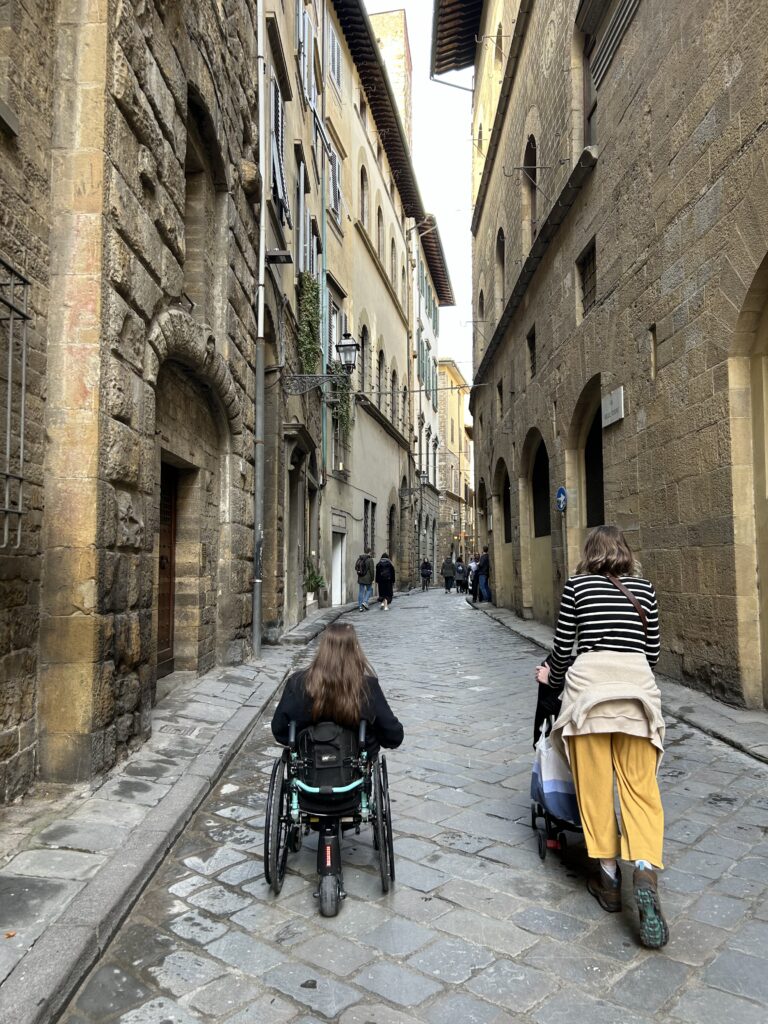
The cobblestone streets and lack of footpaths can be tricky to navigate
Accessible Attractions in Florence
Florence has taken notable steps to improve accessibility, making many of its iconic landmarks more welcoming to wheelchair users. To evaluate these efforts, we put the city’s accessibility claims to the test. Here’s what we discovered.
Home to world-famous works by Botticelli, Caravaggio and da Vinci, the Uffizi Gallery is fully wheelchair-accessible. Equipped with elevators, ramps, and helpful staff, this landmark provides your with priority access so you take in its remarkable art collections without hassle.
Tickets
Visitors with disabilities and special needs and one companion or carer are granted free access to the Uffizi Gallery if you can provide certification. We presented our Australian documentation—a doctor’s letter and a disabled parking permit to the staff at the entry and were granted access without any issue. You do not to pre-book your admission.
For additional members of your party who require paid tickets these can be purchased online via the official Uffizi Gallery website or via organisations such as Get Your Guide or Viator. It is highly recommended you book these tickets early as they do sell out.
Helpful Tip: As we were travelling as a party of 3 adults and 1 infant we needed to pay for one adult ticket. I purchased the ticket via the Uffizi.it website a few weeks before our arrival so I could guarantee the date and time we wanted to attend. The ticket is emailed to you instantly and you simply show this to the staff when you enter.
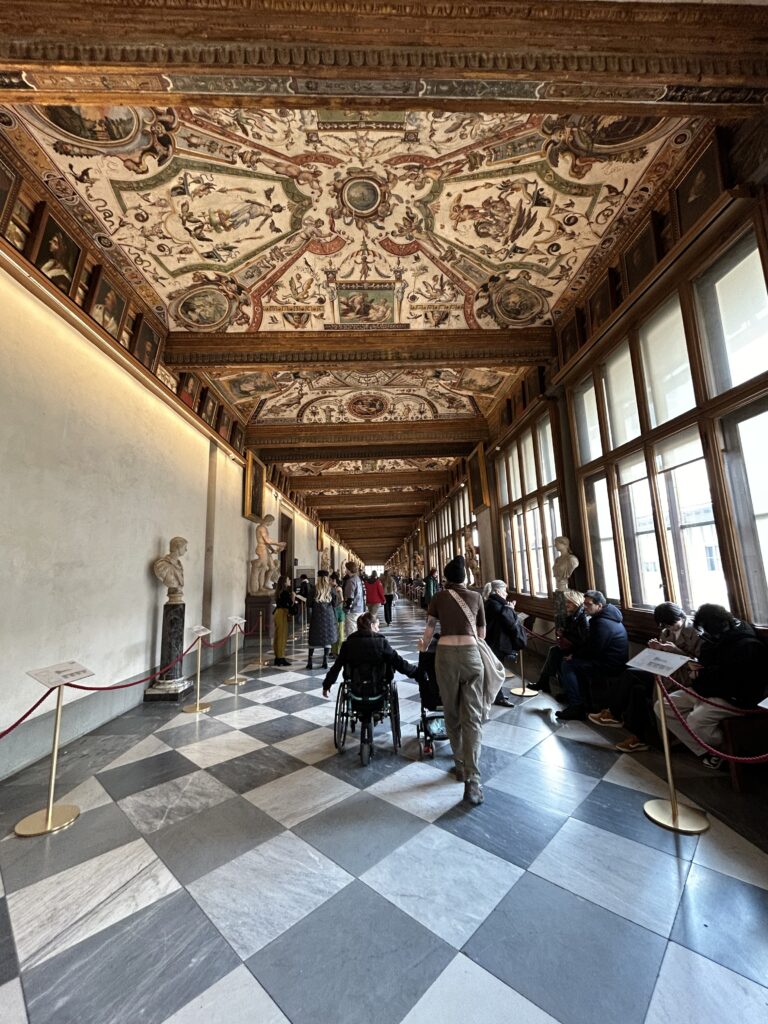
Hallway on the second floor
Accessible Entrance
The wheelchair-accessible entrance is located on Via della Ninna. An accessible ramp leads to the colonnade, where you can proceed to Door 1. Here, you will pass through a security check and receive assistance from staff, who will guide you to the elevators providing access to the Galleries.
Please note that the maximum combined weight permitted in the elevators and Galleries is 230 kg, including both the wheelchair and its occupant. Additionally, food and beverages are not allowed inside the Gallery.
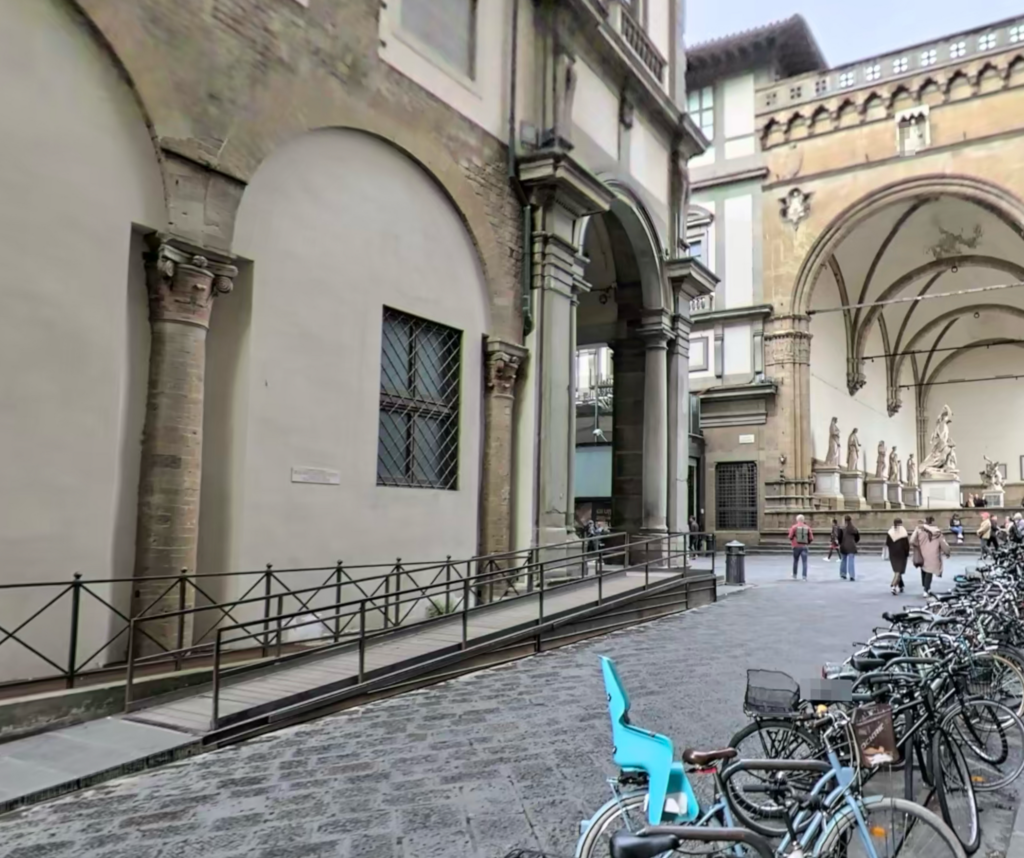
The accessible entrance to the Uffizi Galleries is via this ramp
Accessible Toilets
Accessible bathrooms can be found on both the first and second floors of the Gallery. Both facilities were exceptionally clean and thoughtfully designed, complete with baby changing stations. However, we noticed that the second-floor bathroom was often locked, requiring assistance from a staff member to access it. This seemed to be a common practice during our travels in Europe. While this ensured the bathrooms were reserved for those who specifically needed them, it also posed a challenge at times, as locating staff for assistance could be difficult.
Helpful Hint: the views of the Arno River from the second floor are beautiful and not to be missed.
Want to admire Michelangelo’s David in person? The Accademia Gallery is one of the most inclusive spaces for visitors, with all exhibition spaces accessible via escalators and ramps, and friendly staff available to assist should you need it.
Walking through Priogioni’s Gallery towards Michelangelo’s David
Tickets
Visitors with disabilities and one companion or carer can enter the Accademia Gallery free of charge if you can provide certification. We presented our Australian documentation—a doctor’s letter and a disabled parking permit to the staff at the entry and were granted access without any issue. You do not to pre-book your admission.
For additional members of your party who require paid tickets these can be purchased online via the official Uffizi Gallery website or via organisations such as Get Your Guide or Viator. It is highly recommended you book these tickets in advance as they do sell out.
Accessible Entrance
The main entrance and ticket office, located at Via Ricasoli 60, are fully accessible for both wheelchairs and strollers. All exhibition halls and galleries can easily accommodate wheelchair users, offering ample space for comfortable navigation.
Accessible Toilets
A fully accessible bathroom is located on the ground floor, next to the elevator.
3. Santa Maria del Fiore (The Duomo) and the Piazza del Duomo
The Santa Maria del Fiore is a stunning architectural masterpiece that includes the Cathedral, the Opera del Duomo Museum, the Bell Tower, the Dome, and the Baptistry. While the Bell Tower and Dome unfortunately remain inaccessible to wheelchair users, the Cathedral, Museum, and Baptistry are fully accessible, ensuring an inclusive and welcoming experience for all visitors.

Tickets
Admission to the Cathedral is free, but there is a charge for entrance to the Opera del Duomo Museum and the Baptistery. Visitors with disabilities are granted free entry to all three locations, as well as one companion or carer. You must present your certification at the ticket office in order to receive this special arrangement.
To ensure a smooth visit, it’s recommended to email the Duomo Firenze team at [email protected] to arrange your preferred date and time.
For those who require paid tickets, they can be purchased online through the official website (https://tickets.duomo.firenze.it) or via third-party companies such as Get Your Guide or Viator. It is recommended to book in advance as these attractions are popular among tourists.
Accessible Entrance
The entrance to the Cathedral, located on Via della Canonica, has a dedicated lane for visitors with disabilities. The elevators at this entrance provide access to all levels within the cathedral complex.
The entrance to the Opera del Duomo Museum is located at the rear of the cathedral or via a shared entrance with the Tourist Information Office in Station Square no.4.

Accessible Toilets
A fully accessible bathroom is located in the Museum.
4. Palazzo Pitti and Boboli Gardens
This architectural masterpiece is largely wheelchair-accessible, featuring lifts and flat interior pathways. However, reaching the entrance of the Pitti Palace involves a steep incline with a maximum gradient of 20%, so wheelchair users or individuals with reduced mobility are advised to have an accompanying person for assistance. The entire area surrounding the palace is pedestrianised, and vehicle access is not permitted.

The inner courtyard of the palace (Cortile dell’Ammannati) is step-free, providing convenient access. This courtyard serves as the central hub, housing amenities such as a cafeteria, bathrooms, and a bookshop. It also acts as the starting point for exploring the Pitti museums.
Two accessible entrances lead to the Boboli Gardens. One is located on the left side of the courtyard facing Pitti Square, and the other is at Porta Romana Square. However, navigating the gardens requires an accompanying person due to the terrain, which consists of clay and gravel and features predominantly sloping paths with frequent climbs and descents. Please note that the Porcelain Museum within the gardens is not wheelchair-accessible.
From the inner courtyard, there is a vaulted corridor on the left that leads to the Boboli Gardens via a dirt and gravel path (uphill) towards the Amphitheatre. Alternatively, the main entrance near the cafeteria involves ascending a winding incline—with 44 shallow steps and no handrail—leading to a short paved slope that also connects to the Amphitheatre.
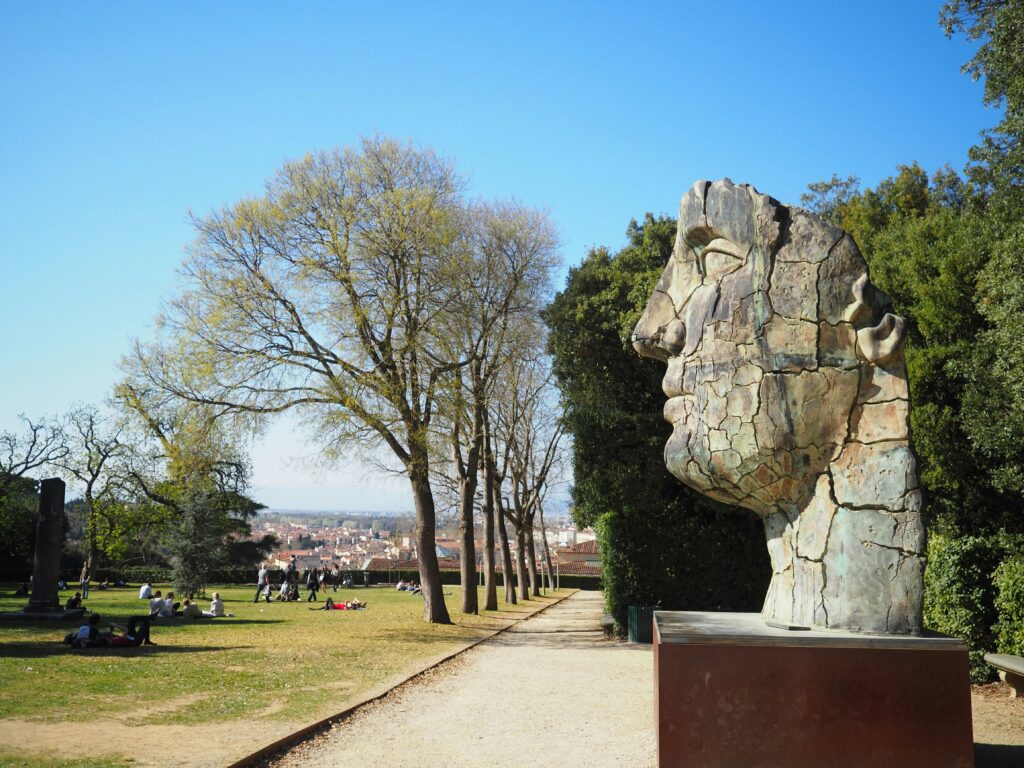
With its blend of historical charm and thoughtfully designed accessibility features, the Pitti Palace and Boboli Gardens provide a unique experience, though some areas may require extra assistance for visitors with mobility challenges.
Tickets
Visitors with disabilities and their companions are not required to book admission in advance. Entry can be obtained directly at the ticket office in Piazza Pitti, located to the right of the main entrance. For assistance or further information, please approach the reception staff at the ticket office or museum entrance. They can be easily identified by their white or green uniforms and official badges.
Accessible Toilets
A fully accessible bathroom is located in the inner courtyard of the Pitti Palace, to the right, just past the cafeteria.
In the Garden, there are two wheelchair-accessible restrooms: one in the building near the Chestnut Meadow area and another at the Annalena entrance on Via Romana.
5. Piazza della Signoria, Piazzale Michaelangelo, and Ponte Vecchio
Florence’s famous piazzas and bridges are mostly flat, making them perfect for easy and smooth exploration on foot. These iconic spots, such as Piazza della Signoria and the Ponte Vecchio, are not only rich in history but also brimming with life. Strolling through these areas, you’ll find street performers, local artisans, and lively cafes that give you a true sense of the city’s charm. The bustling activity provides a captivating glimpse into Florence’s vibrant atmosphere, while offering stunning views of its timeless architecture and the Arno River.
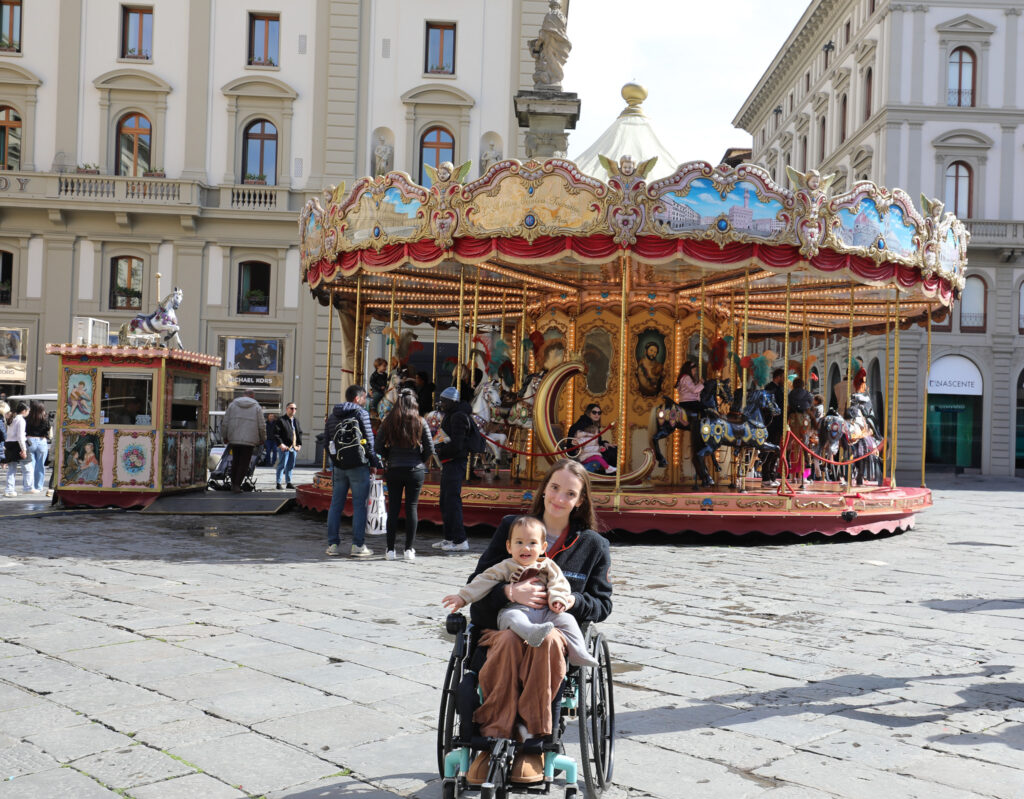
Getting Around Florence
Navigating a city with historic roots often raises concerns about mobility. We found Florence had several options to ensure wheelchair users can get around without difficulty.
1. Rolling Distance
We stayed in the historic centre of the city, so the majority of the attractions were within rolling distance. Florence’s compact layout makes it ideal for exploring at your own pace. While the cobblestones can be a challenge there are many smooth footpaths, most with curb cuts.
2. Taxis
During our time in Florence, we used taxis a few times and were consistently provided with accessible vans. Each driver was incredibly helpful and professional, making our experience smooth and enjoyable.
- Public Transport
Florence’s buses are equipped with ramps and are advertised as wheelchair accessible. However, when we tried to board a bus, heavy traffic prevented it from stopping in a safe spot to deploy the ramp, so we opted for a taxi instead.
On the other hand, Florence does offer accessible trams that conveniently connect the main train station to the airport.
We traveled to Florence by train from Rome, and it turned out to be the most effortless and stress-free way to journey between the two cities. For travelers with disabilities, the SalaBlu service proved exceptional. I booked our train tickets online through the Trenitalia website, then visited the SalaBlu office at Rome’s Termini station the day before our departure. This ensured the staff were fully informed of our requirements, allowing them to arrange the necessary equipment at both Rome and Florence stations.
For Marli, accessing the train was seamless thanks to a small platform lift that transported her from the platform directly to the carriage entrance—and back again upon arrival. Our seats were conveniently located at the end of the carriage, offering plenty of space for Marli to transfer to a seat while her wheelchair was securely stored in the space across the aisle. Additionally, the carriage featured a spacious, clean, and fully accessible bathroom, making the entire journey comfortable and accommodating.
Staying Comfortable in Accessible Accommodations
When it comes to lodging, Florence offers a variety of accessible options ranging from boutique hotels to international chains. Always double-check accessibility features before booking, including elevator sizes, bathroom details, and step-free access to rooms.
Here are a few tips for choosing wheelchair-friendly hotels in Florence:
- Opt for accommodations in the historic centre of the city to stay close to major attractions.
- Look for places with en suite bathrooms featuring roll-in showers or grab bars.
- Contact hotels in advance to confirm accessibility details and avoid any surprises.
During our visit to Florence, we had the pleasure of staying at two exceptional hotels:
- Grand Hotel Baglioni
- Grand Hotel Adriatico
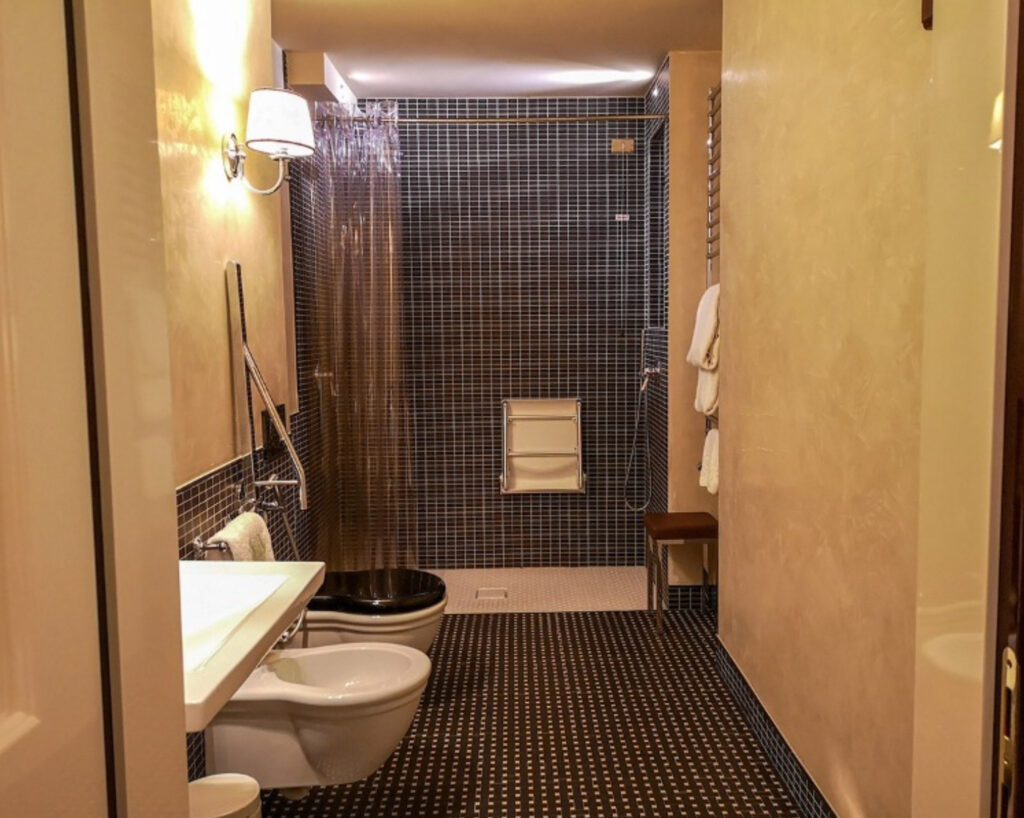
Each of these hotels exceeded our expectations, offering both comfort and accessibility to enhance the overall experience.
Friendly Locals and Handy Tools
Florence is famous for its warm and welcoming hospitality. Locals are often eager to assist visitors, so don’t hesitate to ask for help if needed. This kindness was evident during our own arrival in Florence by train from Rome. The train staff went above and beyond, insisting on carrying our bags to the taxi stand and ensuring we found an accessible taxi to our hotel. They even took the extra step of calling ahead to inform the hotel of our arrival—a thoughtful gesture that left a lasting impression.
Technology can also make your trip significantly smoother:
- Wheelmap: A crowdsourced app ideal for finding wheelchair-accessible routes, restrooms, and attractions in Florence.
- Google Maps Accessibility Settings: Use these to scout accessible paths before heading out.
A Few Extra Tips for Enjoying Florence
To make the most of your experience, keep these tried-and-tested tips in mind:
- Pick the right timing: Avoid peak tourist hours to explore with fewer crowds.
- Travel light: Pack only what you need to keep things simple and manageable.
- Plan ahead: Research accessible restaurants, cafes, and restrooms to ensure a hassle-free day.
- Stay hydrated and take breaks: Florence’s sunny weather and cobblestones will have you working up a sweat—pace yourself.
Roll Into Florence With Confidence
Despite its historic quirks and cobblestones, Florence has made inspiring efforts to welcome all travellers, including those who use wheelchairs. Accessible transport, accommodating locals, and inclusive landmarks ensure you’ll experience the arts, culture, and history that make this city so beloved.
The key to success lies in planning and preparation. Equip yourself with this guide, sturdy gear, and a spirit for adventure, and Florence will unveil its treasures to you one smooth roll at a time.
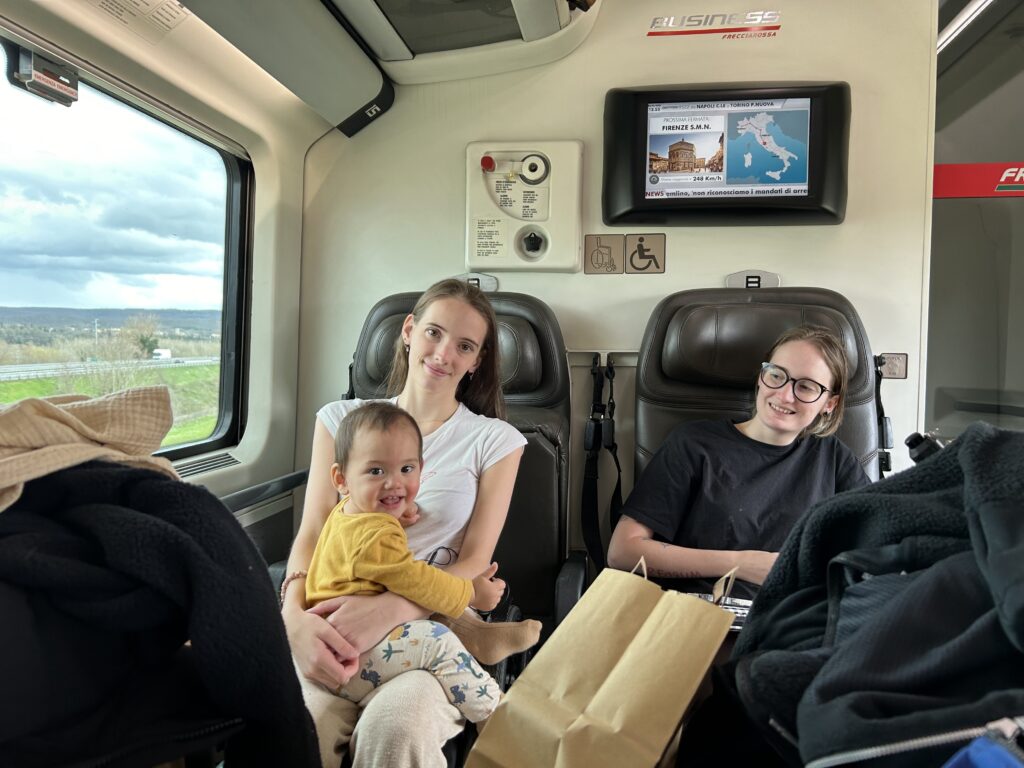
What are your top tips for traveling in Florence as a wheelchair user? Share your experiences and recommendations in the comments below—we’d love to hear from you!
Happy Travels, Always


